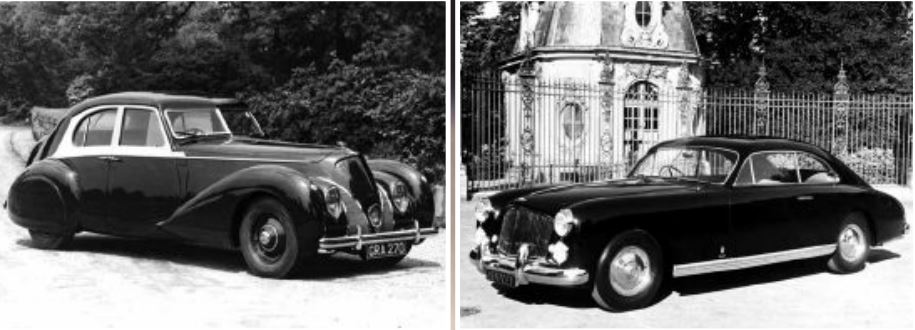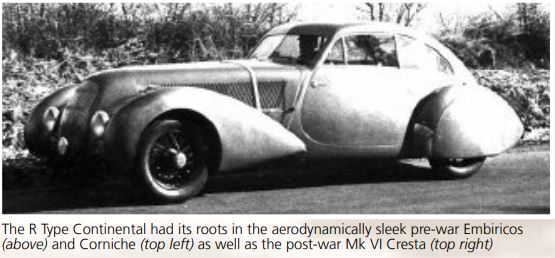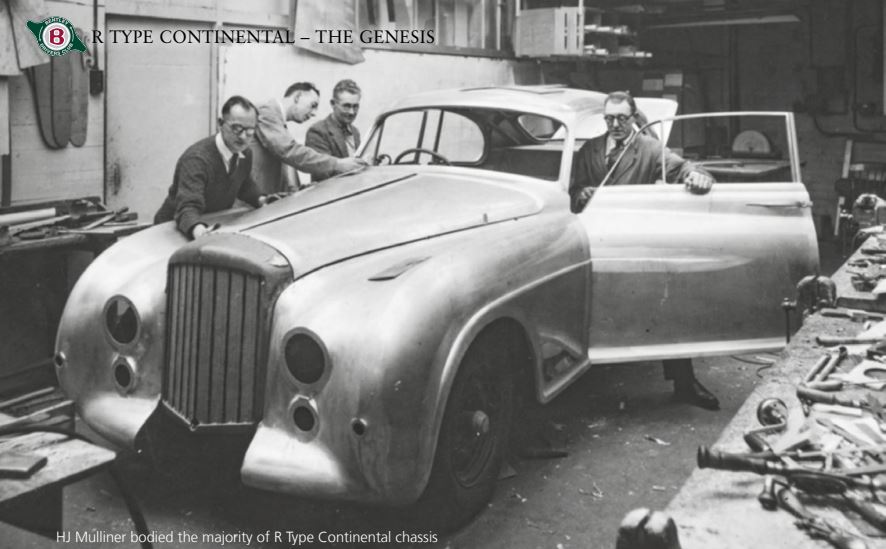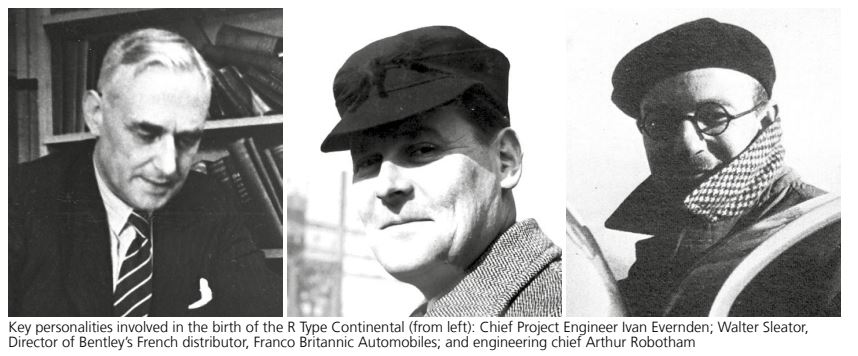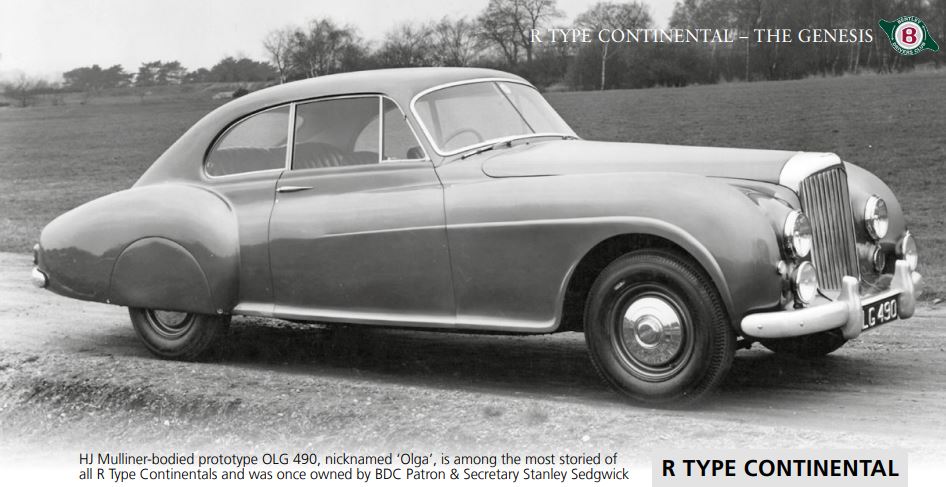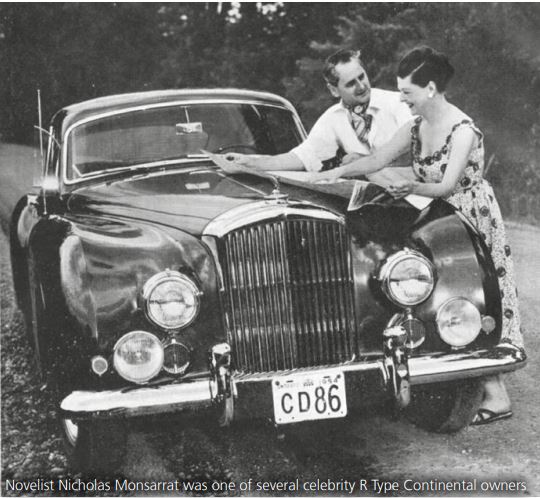This year sees the 70th anniversary of one of Bentley’s most iconic models – the R Type Continental. Respected author Davide Bassoli discusses how the feted car came into being. Images: Courtesy of Author
So strong is the fascination of the R Type Continental that the 70 years since its launch in 1952 have seen a never-ending flow of articles and books, including my own 456-page Continental Journeys. When I published this in 2017, I thought I had written everything that could be written on the subject of this masterpiece among cars, with a detailed description of its design, development and of every coachbuilt variant.
But the infamous lockdown we all suffered in 2020 forced me to stay at home and gave me the chance to research further in my archive, where I found material and drawings not used in Continental Journeys. And this sparked my curiosity and raised new questions. What were the deeper roots of the Continental, stretching back beyond the Embiricos Bentley of 1938? Why did legendary French designer Georges Paulin style the Embiricos as he did? What was the exact DNA of the bloodline connecting the pre-war Embiricos and Corniche to the post-war Mk VI Cresta and culminating in the paragon that is the Continental? How did the interplay of the strongwilled personalities inside and outside Bentley Motors influence the evolution of the high-performance Bentley?
The deeper my research, the more interesting and fascinating material I unearthed about those glory days just before and after World War II. So during lockdown I decided to start writing a new book, as a complement to Continental Journeys and in order to show the Continental from a different point of view, giving enthusiasts and fortunate owners better insight into exactly why the car became such an icon from its very launch.
With the Paulin Bentley (B27LE) and 1939’s Corniche prototype (both designed by Georges Paulin, although today B27LE is also known as the Embiricos Bentley from the name of the first owner), I came to appreciate the sheer glamour of the world of pre-war cars, and this helped me to better understand the choices made by the Rolls-Royce Board at the end of the conflict.
My research wasn’t restricted just to the actual experimental Bentleys built, but extended to the personalities involved in the project, such as the veteran engineering chief Arthur Robotham, whose memoir Silver Ghost and Silver Dawn was a significant source; the influential Ivan Evernden, who was responsible for coachwork in Derby’s Chassis Design and Car Project Office; and Walter Sleator, Director of Bentley’s French distributor, Franco Britannic Automobiles, who constantly pushed the company to develop a high-speed Bentley that offered his Continental customers style and performance to match the French grandes routières from Delahaye, Delage and Talbot
The thread continued through the early post-war years. Despite the difficulty of building even standard cars, Sleator’s contagious (and commercial) enthusiasm lit the touchpaper on the collaboration between car-mad French industrialist Jean Daninos (later of Facel Vega fame) and the Italian coachbuilder Pinin Farina, which gave birth to the svelte Cresta series of two-door coupés – light years away from their more prosaic Mk VI saloon cousins. However, by that time Evernden, now Chief Project Engineer of the Experimental Department, was already working towards the realisation of the Corniche II (which would take the Continental name at launch, and is today referred to as the R Type Continental).
In particular, my purchase at auction of an important, previously unseen, report issued by Evernden in 1950 titled ‘Motor Car Air Resistance and Directional Stability’ was one of the key points in writing this book, because it clearly explained all the work and airflow tests undertaken by Evernden in the new Rolls-Royce wind tunnel at Hucknall, which contributed to defining the final shape of the Continental. Another important report was provided by Foundation Chairman Ken Lea. Titled ‘Corniche II – A New Record Breaking Saloon Sports Car’, Evernden explained the studies behind the car’s creation. Today the Continental is considered one of the era-defining cars of the post-war years, and present-day enthusiasts can be forgiven for thinking that it only received such acclaim after attaining classic status in the decades after its launch. Not so!
From the very launch day, its head-turning allure attracted the international jet-set, drawn like moths to a flame by a heady cocktail of streamlined elegance, refined mechanics, superb finish and Continent-shrinking performance (it was the fastest four-seat saloon in the world). This was a glamorous generation of wealthy A-listers whose extravagant lifestyle filled gossip columns and magazines in a world still recovering from the disasters of war – and the Continental was their co-star as champagne corks popped in the most exclusive haunts of Europe and America. Aristotle Onassis, Gianni Agnelli, Laurance Rockefeller, the Shah of Iran, racing driver Briggs Cunningham, novelist Nicholas Monsarrat – these were but a few of the famous names on the owners’ list. I can only hope that my book has done justice to these remarkable cars and their creators. • The new book Bentley Continental – The Genesis is available from www.nubesargentea.com
R TYPE CONTINENTAL – IN BRIEF
As mentioned, sophisticated aerodynamics and lightweight materials were used to create the R Type Continental, a groundbreaking, high-performance car with sweeping lines capable of running for long periods at high speed across Continental Europe, writes Stuart Newman. Deriving from the ‘big-bore’ Mk VI, which was succeeded by the R Type whose production life spanned just three short years (from 1952-’55), Bentley Motors produced 208 two-door Continentals in that period. The R Type – which succeeded the Mk VI in Bentley’s armoury and boasted a much larger boot – was powered by a 4½-litre, straight-six engine and driven by a four-speed manual gearbox (an auto was optional) enabling the car to comfortably cruise at just over 100mph. The Continental, by comparison, was ultimately powered by a more potent 4.9-litre engine, allowing it to break the 115mph barrier – the fastest Bentley ever built at the time. The cars looked elegant, too, thanks to the wonderfully stylish bodies created by celebrated coachbuilders such as HJ Mulliner (which clothed the majority of Continentals), Park Ward, Franay, Graber and even Pinin Farina. Indeed, such was the Continental’s impact that it created a template for Bentley grand touring that lasted decades – and even inspired the design team working on the first Continental GT some 50 years later.
This article was originally published in The Bentley Drivers Club 'Review' magazine.


